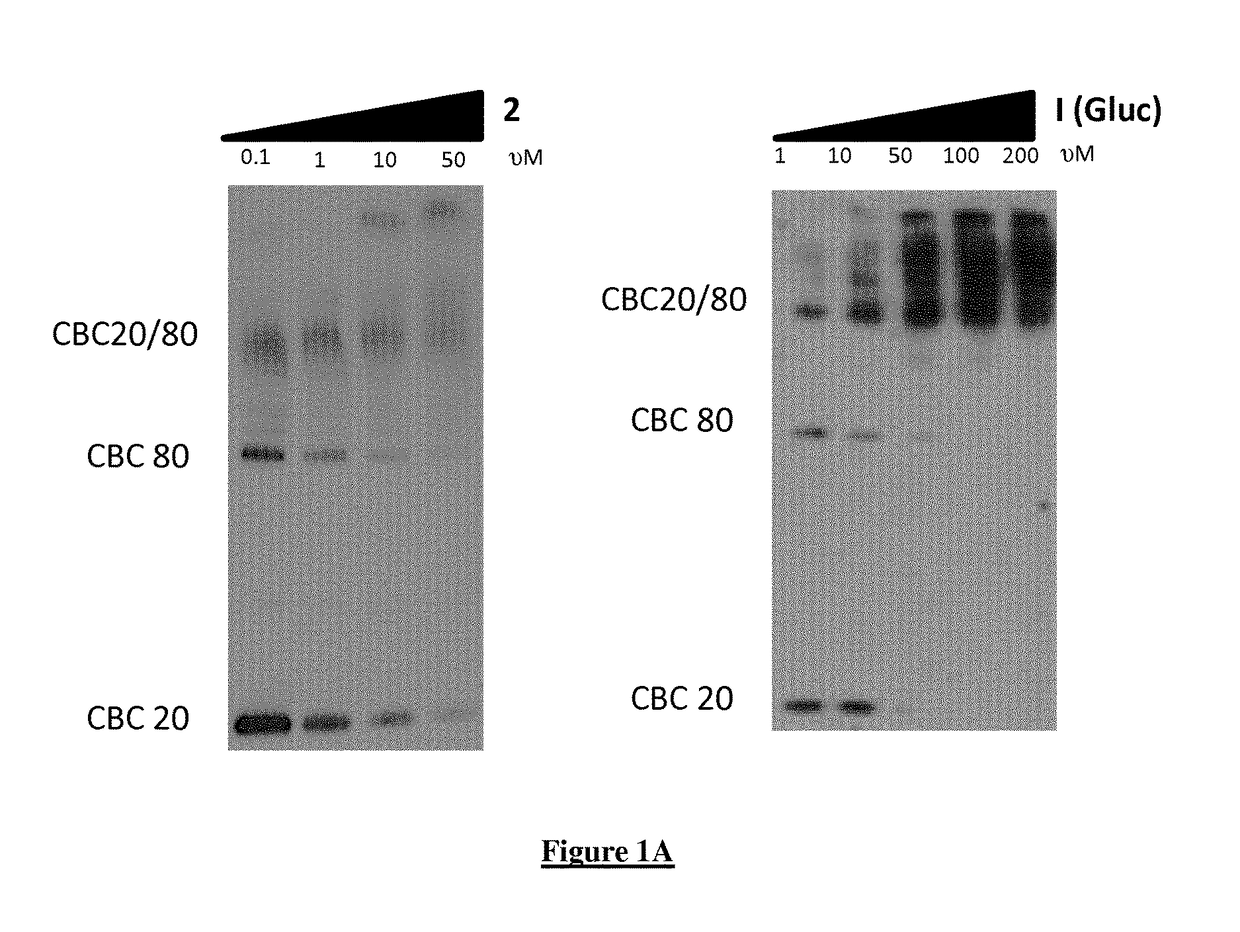A new quinoline derivative for use in the treatment and prevention of viral infections
a quinoline derivative and quinoline technology, applied in the direction of sugar derivatives, organic chemistry, drug compositions, etc., can solve the problems of limited long-term use of anti-retroviral therapy (art) and limited long-term use of haar
- Summary
- Abstract
- Description
- Claims
- Application Information
AI Technical Summary
Benefits of technology
Problems solved by technology
Method used
Image
Examples
example 1
of Methyl 2,3,4-tri-O-acetyl-D-glucopyranosyluronate bromide-compound (3)
[0196]
[0197]To commercially available D-glucurono-6,3-lactone compound (6) (48.6 g, 276 mmol), was added anhydrous methanol (500 mL) and Na metal (200 mg) at 0° C. The mixture was stirred under N2 for 5 h. The solution was treated with Amberlite® IR-120 (Ir) resin until pH 3. After filtration the solvent was removed in vacuo to give a yellow gum. The residue was partially dissolved in Ac2O (100 mL), and a solution of HCIO4 (0.1 mL) in Ac2O (1 mL) was added dropwise to the reaction mixture at such a rate that the solution did not exceed 40° C. The reaction mixture was then stirred overnight at rt under N2. The product was then dissolved in ethyl acetate, washed with 1 N HCl, H2O, and brine, the organic phase was dried over Na2SO4.
[0198]The solvent was removed in vacuo to afford per-O-acetate intermediate compound (5) (96.5 g, 93%) as a white gum with an α / β ratio of 75:25. The spectroscopic data was consistent w...
example 2
n of Protected β-Glucuronides Compound (4)
[0203]To a solution of compound (2) (10 g, 25.72 mmol) in anhydrous toluene (300 ml) were added cadmium carbonate (2.6 g, 15.12 mmol), and the whole was refluxed with a dean stark trap for 12 hours. After cooling methyl α-acetobromoglucuronate III (10.3 g, 25.94 mmol) was added, and the whole was further refluxed for 24 hours. The precipitate was removed by filtration and washed with mixture of CH2Cl2 / CH3OH: 95 / 05. The filtrate and washings were combined and evaporated down. The oily residue was purified on Column chromatography on silica gel, eluting with CH2Cl2 / MeOH: 98 / 02 to gave the protected Glucuronide compound (4) (3.5 g, 5.35 mmol) as a white foam.
[0204]1H NMR (400 MHz, CDCl3): 7.82 (d, J=9.2 Hz, 1H); 7.75 (dd, J1=7.53 Hz, J2=1.18 Hz, 1H); 7.56 (dd, J1=8 Hz, J2=1.18 Hz, 1H); 7.39 (d, J=8.43 Hz, 2H); 7.33 (d, J=8.43 Hz, 2H); 6.82 (d, J=8.1 Hz, 1H); 6.50 (d, J=8.65 Hz, 1H); 5.47 (t, J=9.44 Hz, 1H); 5.18 (t, J=9.44 Hz, 1H); 4.86 (m, 1H)...
example 3
n of N-β-glucuronide of 8-chloro-N-(4-(trifluoromethoxy)phenyl)quinolin-2-amine Compound (1)
[0205]Hydrogen peroxide (30%, 10.4 ml) was added to a stirred suspension of lithium hydroxide monohydrate (4.73 g, 112 mmol) in water (44 ml), forming a solution within 3-4 minutes. The mixture was stirred for a further 10 min, and then added to a stirred solution of compound (4) (3.4 g, 5.2 mmol) in THF (140 ml). A precipitate formed within 15 min, and the mixture was quenched by addition of sodium thiosulfate after 75 min. the reaction being complete as judged by t.l.c. after 45 min. The mixture was acidified to pH 2.5 with 1M hydrochloric acid and crude product was extracted three times with ethyl acetate. The combined extracts were dried (Na2SO4) and solvent was removed under reduced pressure to leave chromatographically pure glucuronide 2 (2.5 g, 4.86 mmol, 93%) which was chromatographied to give yellow solid.
[0206]1H NMR (400 MHz, DMSO-D6): 8.07 (d, J=9.2 Hz, 1H); 7.81 (dd, J1=8 Hz, J2=...
PUM
| Property | Measurement | Unit |
|---|---|---|
| elimination half life | aaaaa | aaaaa |
| elimination half life | aaaaa | aaaaa |
| temperature | aaaaa | aaaaa |
Abstract
Description
Claims
Application Information
 Login to View More
Login to View More - R&D
- Intellectual Property
- Life Sciences
- Materials
- Tech Scout
- Unparalleled Data Quality
- Higher Quality Content
- 60% Fewer Hallucinations
Browse by: Latest US Patents, China's latest patents, Technical Efficacy Thesaurus, Application Domain, Technology Topic, Popular Technical Reports.
© 2025 PatSnap. All rights reserved.Legal|Privacy policy|Modern Slavery Act Transparency Statement|Sitemap|About US| Contact US: help@patsnap.com



